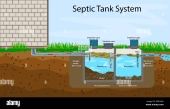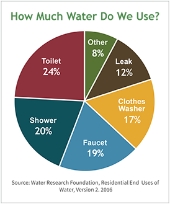Hello everyone. I'm new here and was just viewing some of the forums' brainstorming on alternatives to septics. Something that Paul S mentioned about it not being a good idea to use ash in a garden got me thinking somehow about how trees would process human waste.
My idea basically centers on what Paul S pointed out. That plants will ingest our waste toxins. So the question became how do we get our waste toxins into the plants before they get into to ground?
Please excuse any ignorance of this subject I might have...I am only bring this up to get feedback and other ideas.
So I thought, what if we fill a box with soil and took a few saplings and enclosed them in the box, the box being enclosed at the top so the trees trunks can stick out of the box (so their leaves can get sunlight) but no smells can escape the box from the top. And suppose we build a platform higher than the box where (maybe 10 feet above the box) where we put an outhouse with a chute connected to it that goes directly into this box that the trees are enclosed in so that, after someone uses the outhouse, gravity take the waste down directly in to the box? Now this chute would go all the way into the box full of soil in such a way that it wouldn't get backed up because the older waste would be processed and broken down. And suppose at the top of this chute, on the outside of the outhouse (or maybe the inside?) there was a small water tank with a valve...And this water tank would be filled up after every use. This would provide a barrier at all times to any smells trying to make their way back up the chute (much like a regular toilet). After someone used the outhouse, the waste would fall into this water filled holding tank, they would shut the toilet seat and then pull a lever that would allow the waste and water to fall into the soil tank at the bottom. Then they would refill the water tank before leaving for the next person. The waste and water that went down the chute would be processed and feed the trees who, since they are in a box enclosed at the top could only get their water from what we put into it.
Obviously, not all of the waste would be processed immediately by the trees so the actual septic tank would be a circular step pyramid with levels of filtration. The top box would have small holes to let the excess waste water filter and be processed by either an open bed of flowers or another enclosed box of saplings (depending if the smells have dissipated by the 2nd level). To further assist break down, a third filtration level would be added.
Here is a crude diagram I did really fast (Obviously, it can be improved upon):
Obviously, this is a very crude proposal so I do have some questions:
1.) Would the tress be able to actually process all the waste and maybe not necessitate filter holes at the bottom of the top tank (and, therefore, rule out the need for a 2nd and 3rd level?). I'm guessing the trees would require that relief to be able to "breathe"through the soil but I'm not sure.
2.) Is there any basic knowledge I'm missing that says this won't work?
The point is:
1.) Waste doesn't have to be moved or carted away by humans
2.) It would be relatively inexpensive and easy to construct by oneself.
3.) The waste never goes into the ground, it's a completely self contained system. (The bottom or last level would have no filters because, the idea is, by then, the waste products would be sufficiently broken down and used by the plants by then. If not, you can simply add more levels or make the ones you construct larger.
Note: You would of course not eat anything produced by the plants and trees used in the septic.
A con I can think of is that, because the top box with the saplings was enclosed, eventually their roots would outgrow the box that trees would have to be replaced. But how many years would that take?
Anyway, looking forward to your input. Thanks for looking. Peace.

































































